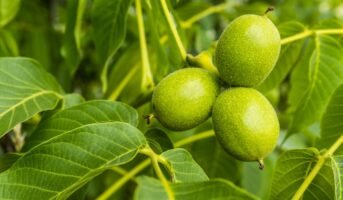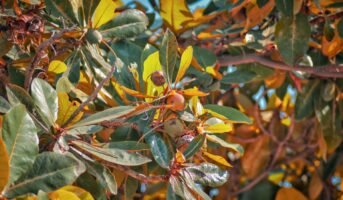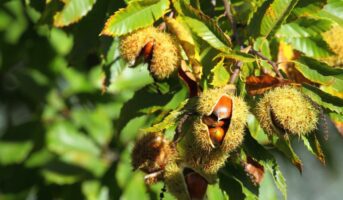Figs are one of the most delectable fruits available in the commercial market. These fruits are enjoyed in various seasons and are fairly easy to grow. Scientifically known as Ficus carica, this plant species is also known as the common fig tree or the edible fig tree and descends from the mulberry plant family with over 1000 different species of trees, most of which are used to harvest latex and not fruit.
The history and cultural significance of the fig plant
This is a sweet, tangy treat that has been consumed by people since times as old as 5000 B.C. Some have even speculated the fig tree was one of the first domesticated crops.
Fig has been an important symbol across religions including Hinduism, Christianity, Islam, Judaism and Buddhism. Fig plant is supposed to represent peace, prosperity and fertility. In fact, history suggests that figs were given as prizes to ancient Olympians for their athletic win.
See also: Sacred fig: Facts about Ficus religiosa

Source: Pinterest
see all about Fruit Plants
Unlike some fruits, figs have to complete their ripening process entirely on the tree. This makes them a difficult harvest and, in many places, are harvested prematurely only. Hence, the best way to enjoy figs is to grow them yourself.
Fig tree: Key facts
| Scientific name | Ficus carica |
| Common name | Fig tree, edible fig |
| Plant type | Fruit tree |
| Mature size | 10-20 ft. tall, 15-20 ft. wide |
| Sun exposure | Full sun |
| Soil type | Organic, rich, well-drained |
| Soil pH | Neutral |
| Bloom time | Seasonal |
| Nativity | United states |
| Flower colour | Green |
| toxicity | Non-toxic to humans, slightly toxic to pets |
Fig tree: Description
The Ficus carica is a deciduous tree that is a part of the Moraceae family. It is grown for the fruit it bears, which is consumed as a delicacy all over the world. The fig tree has several branches and palmate leaves. The fig tree grows about 10-30 feet tall and can live upto 50-75 years. It has leaves that are thick and deeply lobed, with a rough surface on the top and a hairy surface beneath. The fig fruit is roughly oval-shaped and occurs in a variety of colours like yellow, bronze, brown etc.
Fig tree: Types
There are three primary cultivars of the fig tree that are used to produce fruit commercially.
- Caprifig (Ficus carica sylvestris): This cultivar produces fruit that is generally inedible and is grown mainly for the purpose of pollination.
- Smyrna fig: Requires cross-pollination by caprifig in order to bear fruits and function properly
- San Pedro fig: This fig crop produces two slightly different fruits at two different times of the year. The first crop uses old branches to grow and doesn’t need cross-pollination. Later on, the tree produces a new crop that will prematurely drop if it doesn’t receive cross-pollination.
Growing figs in small spaces: Tips for a bountiful harvest
The fig tree can be grown by propagating through cuttings. This method is simply better because it saves you a lot of time and effort you’d have wasted just to get a plant from the nursery, plus it’s way more fun as well.
To propagate a fig tree, take the cuttings from a dormant tree, preferably in winter, when it is the safest to cut from a fig tree. Choose young branches which are about 1-2 cm thick and cut about 15-20 cm of the stem off.
Cut the bottom of the stem at about a 45-degree angle and place it in a small pot that is about 10 cm wide. It should be filled with compost. Instead of rooting hormone, use some of your own saliva and you’re good to go. Plant it about 5 cm deep and water the pot thoroughly. Make sure it is well drained as well.
Place the pot in a cool and dry location with plenty of light. This shouldn’t be direct sunlight as it may hinder the plant. Keep it away from the wind and make sure it receives shade to some extent as well.

Source: Pinterest
Fig tree: Maintenance
While there are only a handful of fig species that are edible, it is important to know that improper care of these plants can render even the edible plants to be inedible. An all-purpose granular slow-release 8-8-8 fertiliser works best for this plant species. Fertilise it twice a year or whenever you notice the plant is getting weak.
Once it has grown past the germination phase, the fig tree is a little complicated to grow, given it has a lot of precarious temperature needs. Other than that, the fig tree is quite nonchalant and doesn’t demand anything else that is particularly going to be a headache since the fig tree is grown only for fruit purposes.
Provide the fig tree with full light as it prefers a lot of sunlight and warmth. In order to produce good quality crops and keep up with the consumer’s demands, the fig tree needs at least 6-8 hours of sunlight a day.
The fig tree is quite flexible when it comes to soils and grows in most soils, given they are rich in organic matter and have ample drainage. They do prefer soil that is loamy and clayey. The fig tree is also somewhat drought tolerant and doesn’t have very demanding water needs either. Apart from this, one of their gripes is dry soil. Be careful that you keep the soil moist at all times, consistently. Improper feeding of water may hamper the fruit’s size and taste. Mulch around the tree’s base with good quality organic mulch to help retain moisture.
Fig trees are not hardy and can only survive in temperatures between 10-20 degrees Fahrenheit. They also do prefer a dry climate with plenty of light rain.
Fig tree: Uses
The fig tree has many uses and benefits in the culinary world, but it also has some in the medicinal world as well.
Figs are used to treat ailments like diabetes, constipation, decreased immunity etc.

Source: Pinterest
Fig recipes to elevate your summer meals
Fig salad with nuts
This is an easy preparation, in which, in a bowl take some figs. Toss nuts, cheese, honey and squeeze a dash of lime. This is a very easy to make meal that is healthy and tasty.
Fig Skewers
Cut the figs into 4 pieces and insert skewers and grill them. You can do this with a combination of onion, cottage cheese and capsicum and enjoy a nice barbequed fig treat.
FAQs
How do I know if my fig tree will bear edible fruit?
Ficus carica is a cultivar that has mainly been commercialised to bear edible fruit. Do your research thoroughly and make sure you have bought the Ficus carica plant seeds only.
Are figs toxic to humans?
While most species of the fig family bear fruits that are inedible and potentially toxic to humans and animals, the fig that you can get at the farmer’s market are pretty harmless.
| Got any questions or point of view on our article? We would love to hear from you.Write to our Editor-in-Chief Jhumur Ghosh at [email protected] |
Housing News Desk is the news desk of leading online real estate portal, Housing.com. Housing News Desk focuses on a variety of topics such as real estate laws, taxes, current news, property trends, home loans, rentals, décor, green homes, home improvement, etc. The main objective of the news desk, is to cover the real estate sector from the perspective of providing information that is useful to the end-user.
Facebook: https://www.facebook.com/housing.com/
Twitter: https://twitter.com/Housing
Email: [email protected]












